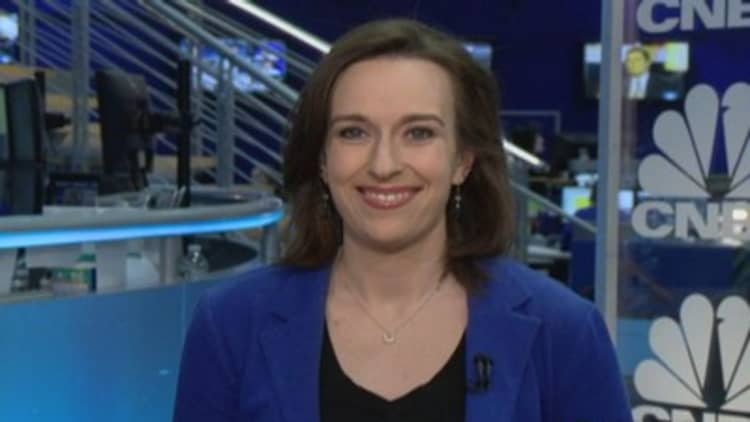Americans still like their bills and coins.
Consumers are using cash more frequently than any other type of payment, a new report shows, especially when it comes to relatively small purchases for food and personal care supplies.
"This really surprised me, to be honest," said Barbara Bennett, vice president and chief strategist for the Federal Reserve System's Cash Product Office, and one of the paper's authors.
The research found that cash accounts for 40 percent of all the payments the average American makes in a typical month, and comprises up 14 percent of the total value of those transactions.
Read MoreOne in 10 Americans don't carry this anymore
Debit cards were the next most popular payment type, making up 25 percent of transactions and 18 percent of the value of all payments.
The data is based on a representative sample of about 2,500 Americans, taken in October 2012. Participants were asked to record all their transactions for three days. And the researchers used the data to compile a look at Americans' shopping behavior.
The cash product office, run out of the Federal Reserve Bank of San Francisco, discovered that almost everyone used cash to some degree. But cash is more likely to be used by certain types of people, and in certain situations.
For example, consumers seem to like to use cash for small-value transactions, like buying gum or a sandwich. The average value of a cash transaction is $21, about half the average value of a debit card transaction.
Also, Americans with annual incomes under $25,000 were more likely to use cash than those with higher incomes, and also more likely to say that they preferred paying in cash. That's probably because many people with little income have trouble getting access to other types of payment, like bank accounts or credit cards, Bennett said.

Younger adults, between the ages of 18 and 24, also had a higher share of cash transactions than older people. Bennett said they haven't analyzed that data in depth yet, but she guesses it could be because younger consumers are more likely to be spending money on small purchases such as pizza, the movies or hair products.
Other research also has shown that people have continued to use cash to some degree, even as the popularity of other forms of payments, like debit cards, has grown.
David Robertson, publisher of The Nilson Report, which tracks how people pay for purchases, said some people will always like cash for the anonymity and convenience it offers. And some people may not have a choice but to use cash because they aren't able to afford to open a bank account.
And there may be some unintended benefits of paying in cash. Manoj Thomas, associate professor of marketing at Cornell University, said his research has shown that when people buy groceries with debit or credit cards, they are more likely to buy unhealthy items than when they pay with cash.
Thomas said paying with plastic seems to have weakened the stop signal that makes you consider whether that's the right purchase.
Read MoreCash isn't king for this shop, even after Target
"Earlier, when you would go to the store, the first thing you had to ask yourself is, 'Do I have the money?'" he said. "Now, you never have to ask that question."
The Federal Reserve researchers commissioned the study to better understand how much cash it might need to produce in coming years. It has never been done before, so Bennett said they can't compare the data to how cash was used in the past. She said the results suggest it's likely cash use will level off or decline slightly in coming years.
—CNBC's Allison Linn


